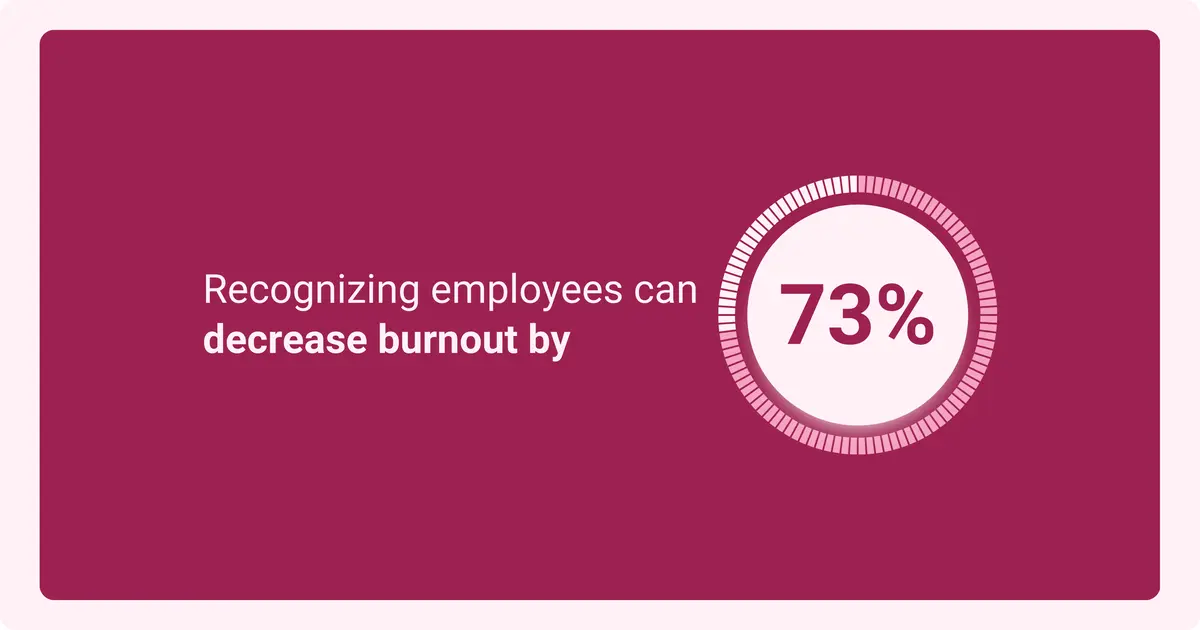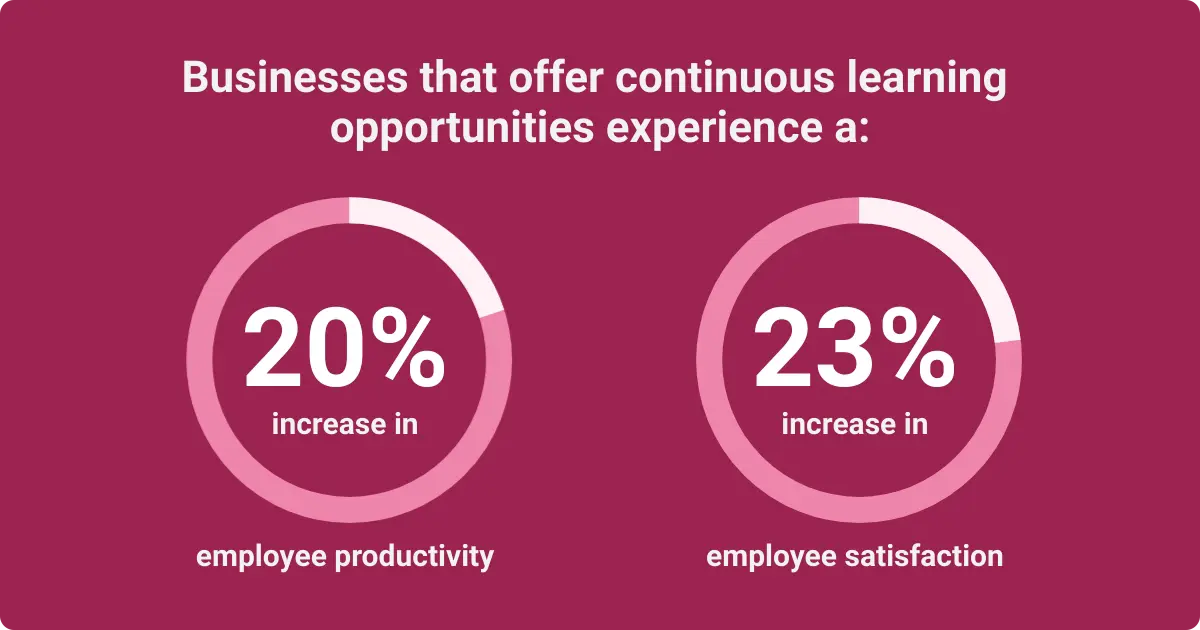What is the Future of Work? Exploring Trends, Technology, and How to Prepare for Tomorrow’s Workforce

The workplace will undergo many shifts as industries change and technologies evolve. An informed perspective allows businesses to prepare for the coming changes.
The 2025 Future of Jobs Report from the World Economic Forum estimates that 170 million new jobs will be created in the next five years, and their research suggests that global macro trends will drive this development. Their report shows that 92 million roles will be displaced by the same trends, like AI and automation, that add the 170 million jobs, giving a net increase of 78 million jobs.
The future of work is affected by three main things: changing societal perspectives, economic shifts, and technological advances such as Artificial Intelligence (AI). There’s a way for your business to be ready for all of them. To ensure your company is prepared for the coming trends in work and employment, there are many implications to consider.
What is the future of work?
The landscape of just about every industry is evolving rapidly these days, changing the very fundamentals of how work is done. These changes include alterations in the workplace itself, the skills needed for jobs, and even job descriptions and responsibilities.
When modeling the future of work, the goal is to project and prepare for how things will change in the coming years. Businesses that are better prepared are more likely to succeed and adapt over time.
What are the key trends shaping the future of work?
Many factors influence what work will look like in the future, including employment arrangements, artificial intelligence, freelancing, and a shift to human-centered work environments. This is not an all-inclusive list, but focusing on the key factors impacting your industry can get your company headed in the right direction.
Artificial intelligence and automation transforming industries
Artificial intelligence and automation transforming industries will have a huge impact on the future of work. AI is a new technology and a familiar buzzword, with many workers fearing that it will take over their jobs as everything is automated.
The truth is that AI isn’t the answer to everything, but accepting it is. Studies show that people who embrace and learn about AI are five times more likely to see job growth within their current organization, 1.5 times more likely to have stronger psychological safety, and two times more likely to recommend their organization to friends and family.
Unfortunately, additional research shows that under half of organizations provide some type of formal or informal training on AI.

AI can bring some anxiety, but it also has a whole lot of benefits. Automating menial, day-to-day tasks and data management frees up your employees for higher-level jobs. Human workers embracing AI automation and the future of work discover that things like cloud computing and collaboration tools actually make their jobs easier. AI isn’t the bad guy, and encouraging its use helps your employees grow.
Flexible work arrangements
The work landscape changed forever after the COVID-19 pandemic. Not only did many companies send employees home to work, but they also realized that a hybrid workplace culture and remote work saved money and decreased employee burnout.
A 2024 study showed that 93% of respondents listed flexibility as one of the top factors in deciding what jobs to apply for. Many workers do better if they can operate on their own time and not be restricted by a traditional schedule.
The downside is that the workplace loses the human element, which can bring down morale quickly. Companies that create opportunities for employees to meet in person have a more positive company culture, but 78% of employees report a more productive work experience if they can recharge when not at work.
Finding the balance between online and in-person work is critical to embracing the benefits of flexible work arrangements.
Demographic and societal shifts in the workforce
Having a multi-generational workplace has pros and cons. The benefits include mentoring and knowledge transfer, additional problem-solving skills, stronger team dynamics, and diverse innovation and perspectives.
The challenges of talent management in a multi-generational workplace include communication barriers, resistance to change, a lack of understanding, and unequal opportunities. Gen Zers are the future of the workplace, with strong values and skills focus that may or may not align with other generations:
- Soft skills: Adaptability, communication, problem-solving, leadership, creative thinking, and networking
- Technological literacy and skills: Data analysis, digital literacy, coding and programming, and software proficiency
- Workplace preferences: Mental health support, financial literacy, social recognition and feedback, growth opportunities, meaningful work, flexibility, and diversity and inclusion
Rise of the gig economy and freelancing
The gig economy is an economic model in which workers mostly take work as secondary employment or freelance arrangements. Uber and Lyft are two major examples of the gig economy. Gig employees are shifting from full-time jobs to project-based, short-term work, which frees up their time and creativity.
The downside to freelancing and the gig economy is that these workers rarely enjoy job security and benefits. The trade-off is multiple income streams and flexibility. In a traditional work economy, workers are valued for their seniority or job performance, but how these factors matter may change as the gig economy makes up much of the future of work.
The shift to inclusive and human-centered work environments
Gen Z is the future of the workplace. The top values of this generation include inclusion, equity, and respect, and they’ll often settle for less money to take a job that’s meaningful to them.
This means there’s a need to create a workplace environment that is human-centric. Forward-thinking businesses focus on mental health and holistic employee well-being, which leads to increased productivity.
Employees want employers who remember their life events, recognize their good work, and maintain an environment that prioritizes their mental health needs. This can benefit employers as much as workers; recognizing employees can decrease burnout by 73%, but 81% of leaders don’t have a strategy in place.

The evolving role of HR and people analytics
The role of HR is also evolving as people analytics become more data-focused, offering objective insights, minimal errors, and less bias in hiring and promoting. Relying on data-driven analytics also increases innovation, improves operational efficiency, and gives you a competitive advantage over other companies.
Data-driven programs help companies spot patterns and trends in cultural factors like customer satisfaction, employee retention, employee engagement, and collaboration. The more data you have on your workforce, the less you have to rely on outdated strategies or intuition.
Environmental sustainability and corporate responsibility
New generations have different values, and the future of work includes employees who are invested in a company's eco-friendliness and sustainability. Gen Z wants to work for people who care about the planet and show it through reduced energy consumption, reduced waste production, and the use of natural resources.
You can demonstrate corporate responsibility in several ways:
- Environmental responsibility: Going paperless, implementing recycling programs, using eco-friendly products and reducing plastic use, or lowering energy consumption through remote work
- Ethical responsibility: Fair labor practices, comprehensive employee benefits, and inclusion initiatives
- Economic responsibility: Donating to non-profits and charities or creating a specialized DEI board
- Philanthropic responsibility: Community engagement, volunteer projects, charitable contributions, or a percentage match for employee giving
Regulatory shifts impacting workplaces
Legislative changes by both the federal and local governments can influence your business with compliance costs, potential penalties, and operational changes. Regulatory shifts may involve paid time off requirements, minimum wage increases, data privacy regulation, and workplace safety.
Risk assessments, data management, and regular monitoring and reporting are crucial to staying ahead of regulatory changes. When changes come, and you are prepared with the data, you know where to make improvements. The biggest challenges in the workplace related to compliance management are a lack of resources, resistance to change, and the volume and complexity of regulations.
How to prepare for the future workplace
Preparing for the future of work involves critical thinking, adaptability, analytical reasoning, problem-solving, emotional intelligence, communication, creativity, and innovation.
Continuous learning, upskilling, and skill development strategies
Workplace learning and training should be continuous. Whenever learning or development stalls, your company or department risks becoming outdated. Upskilling and reskilling the workforce is vital to keeping people employed and useful.
Why continuous learning matters more than ever
Technology advances rapidly. Gone are the days when you could schedule a technology update once a year. Continuous training is essential to stay on top of changes, and employees need to reskill to stay relevant in their jobs.
A major part of this is promoting adaptability and critical thinking, which both require your employees to think about the bigger picture rather than an individual task.
Promoting upskilling within your organization as a cultural priority ensures employees develop and can take technological changes in stride. The good news is that a majority of workers who learn a new skill say they did it to be more effective at their jobs, showing that employees are eager to learn.
Core future-ready skills
Continuous learning also promotes core future skills. These include decision-making, critical thinking, communication, emotional intelligence, advanced digital literacy, and leadership adaptability. The learning process should be fluid and ongoing rather than periodic.
Practical approaches to implement continuous learning
So, how can you implement continuous learning practices into your approach without completely overhauling your system?
- Employee-led skill development programs
- Microlearning and bite-sized training sessions
- Real-world, practical applications
- Simulations for faster skill adoption
- Workhuman® solutions to encourage engagement in ongoing learning

Create a workplace humans will want to join — and a workplace they’ll want to stay.
Find out how with the solutions of the Workhuman Platform.
Skill-based hiring
Employers largely hire based on skills rather than traditional degree requirements. For example, consider the education model. Previously, a specific degree was required to enter the teaching workforce. In today’s world, where educators are desperately needed, states and districts are changing the requirements to focus more on skill rather than formal education, according to the National Conference of State Legislatures.
This model is beneficial because it’s easier to align personal strengths with organizational needs. A degree alone doesn’t prove someone has valuable transferable skills like emotional intelligence and critical thinking.
Potential challenges in the future of work and solutions to mitigate them
Of course, in addition to all the exciting changes, the future of work also presents challenges.
Addressing inequality in the future workforce
AI has the potential to exacerbate inequalities for those who don’t have access to new technology. Advancing technology can benefit highly skilled workers, but lower-skilled workers end up with repetitive tasks and little room for growth.
This highlights the importance of proactive measures that address inequitable access and systemic barriers. Education and training, employee development, policy and advocacy, and compensation and benefits are the most important ways to counteract these issues. Examples of inclusive policies include minimum wage laws, paid family leave, and anti-discrimination laws.
The economic implications of shifting workforce dynamics
Changes in the workforce also affect local labor markets and global economies. An article from U.S. News & World Report on how remote work is reshaping the economyOpens in a new tab, explains that remote work has completely revamped the economy. Unfortunately, the rise of the gig economy and freelancing leaves more employees without benefits, job security, or a guaranteed salary.
According to the IRS Gig Economy Tax CenterOpens in a new tab, gig work requires workers to pay all of their Social Security and Medicare taxes on their own, which increases the tax rate by more than 15%. With a traditional salary, the employer pays half of those taxes.
Job displacement and unemployment due to automation
AI has the potential to take over manual and routine jobs that lower-skilled workers perform, displacing them. This is why it’s so important for employers to offer continuous development and learning courses so workers can move up as the future of work changes.
If you want to truly be ready for a future that doesn’t negatively impact your employees, you must find jobs that aren’t automated and train your workers to take those positions. Not every job can be saved, but you can keep valuable, loyal workers that you can use for higher-level jobs even if their original job is automated out.
Ethical concerns surrounding AI and automation
As with every new, exciting technology, automation and AI come with their own set of challenges. Although AI may appear objective, it can pick up on biases in data and amplify them. This can lead to unfair outcomes in both promotion and hiring.
There are also privacy data concerns when employee data is shared with any outside program. Furthermore, job displacements are likely as AI develops, and AI lacks transparency.
To overcome bias, make sure your machine learning process is representative and diverse. Don’t simply put an AI program into use and then leave it there; be sure to update it regularly. Perform regular audits of algorithms to find potential biases using the data you’ve gathered, and make sure that humans are always overseeing the final data.
Implement strong data privacy measures to protect employee data. Regularly train managers and employees on updates to technology and create ethical frameworks through a collaborative process.
Embrace the future of work
The trends, insights, and expectations of what is to come in the workplace mean little if your company isn’t ready to embrace reality. Today’s workforce is changing at a rapid pace, perhaps faster than ever.
Companies that want to expand and grow are using the tools available to anticipate future developments, while those that ignore developing technology and societal changes may have a hard time growing past a certain point.
The more committed you are to understanding the future of work now, the fewer problems you’ll have when these coming trends arrive. Allow your employees to be part of the process, and keep collaboration and brainstorming lines open.
Learn what your employees want to know and be trained on it, and use their skills and expertise to mark your path forward. The future is an exciting thing if you know how to harness its power.